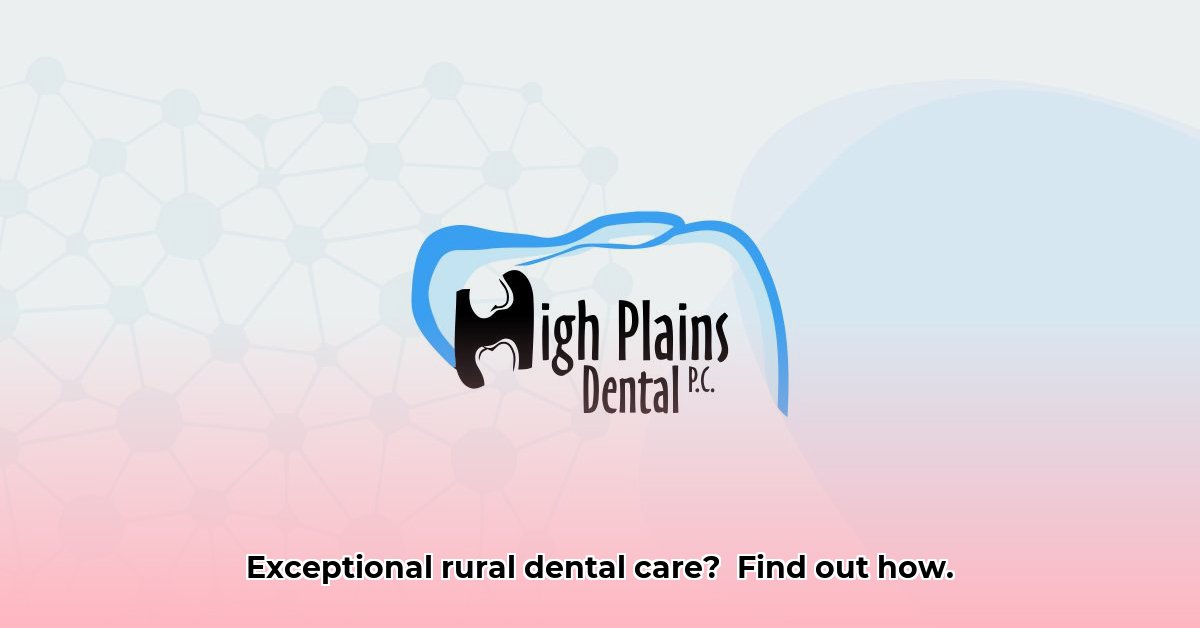
A Case Study in Overcoming Barriers to Access in Rural Healthcare
High Plains Dental (HPD), located in Dickinson, North Dakota, presents a compelling case study in delivering high-quality dental care to a traditionally underserved rural population. This analysis examines HPD's successes, challenges, and potential avenues for future growth, leveraging available data and insights to offer actionable recommendations.
Background: Bridging the Dental Care Gap in Rural North Dakota
Founded in 2011, HPD set out to address the significant oral health disparities prevalent in Dickinson and surrounding rural communities. These communities often face challenges accessing quality dental care due to geographical isolation, limited transportation options, and financial constraints. HPD's mission to provide technologically advanced, patient-centric care directly addresses these barriers.
Methodology: Assessing HPD's Impact
This analysis primarily utilizes publicly available data, including HPD's website and patient reviews from platforms like Yelp. While these sources offer valuable insights into patient perceptions and service offerings, they present limitations. A more comprehensive assessment would require additional data, such as detailed patient demographics, treatment outcome data, and financial information. Future research should incorporate these elements for a more robust understanding of HPD's overall impact.
Analysis: Strengths, Weaknesses, and Opportunities
Strengths: HPD's success stems from a strategic combination of technological advancements and a patient-focused approach. The adoption of digital X-rays facilitates early disease detection and more efficient treatment. Their emphasis on patient education and personalized care fosters trust and enhances patient satisfaction, as evidenced by positive online reviews.
Weaknesses: A critical limitation is the lack of publicly available data on patient demographics and the financial accessibility of their services. This limits a complete understanding of HPD's reach within the community and its effectiveness in serving diverse populations. Understanding the socioeconomic background of their patient base is vital to evaluating equity of access.
Opportunities: Expanding data collection efforts, particularly regarding patient demographics and financial accessibility, would significantly enhance HPD's capacity for strategic decision-making and impact assessment. This data could inform targeted outreach programs and allow for a more accurate evaluation of their success in reducing oral health inequalities. Furthermore, exploring partnerships with local healthcare providers and organizations could broaden reach and support patients facing logistical or financial barriers.
Case Study Findings: A Promising Model, Yet Incomplete
HPD's patient-centric approach and technological integration represent a promising model for rural dental care. However, the inability to fully analyze the demographic and financial accessibility aspects of their services limits a comprehensive evaluation of their effectiveness. The positive patient reviews suggest a high level of satisfaction, but a deeper dive into patient data is crucial to fully understand their impact.
Discussion: Addressing Challenges and Maximizing Impact
HPD's success in attracting patients is apparent, but the question remains: are they effectively serving all members of their community? Without detailed demographic data, we cannot definitively assess their reach among vulnerable populations. The availability of affordable care is equally crucial. Does the cost of services create a barrier for some residents, negating the accessibility provided by HPD’s location? These questions highlight the need for enhanced data collection and more rigorous analysis.
Recommendations: A Multi-pronged Approach
To maximize its impact and ensure equitable access to care, HPD should prioritize the following:
- Implement comprehensive patient surveys: Gather detailed data on patient demographics, financial situations, and treatment experiences. This data will inform targeted interventions and strategic planning.
- Enhance data transparency: Publicly share key metrics related to patient demographics, service utilization, and health outcomes. Improved transparency will bolster credibility and advocate for additional funding opportunities.
- Explore innovative financing models: Investigate options such as sliding-scale fees or partnerships with local organizations to address financial barriers for vulnerable populations. This would greatly enhance equitable access.
- Strengthen Community Outreach: Partner with existing community health initiatives, schools, and social service agencies to increase awareness of HPD's services and reach underserved populations.
- Leverage telehealth capabilities: Expand the use of telehealth to facilitate remote consultations and treatment, thereby overcoming geographical barriers for patients in more isolated areas.
These recommendations are crucial not only for HPD but also for other dental practices seeking to overcome barriers to access in rural settings.
Conclusion: Building a Sustainable Model for Equitable Oral Healthcare
High Plains Dental demonstrates the potential of innovative approaches to delivering quality dental care in rural communities. Their commitment to patient-centric care and technological integration presents a valuable model. However, addressing data gaps and prioritizing equitable access remain crucial for ensuring the long-term sustainability and societal impact of their efforts. Further research and a commitment to data-driven decision-making are needed to provide truly accessible care to everyone, regardless of their location or financial circumstances. By prioritizing these recommendations, HPD can solidify its leadership in rural dental care and serve as a model for other communities facing similar challenges.